Fun Activities For Young Students in Volume 1
Give Your Young Student More Practice with These Creative Math Activities by Kelly Massey
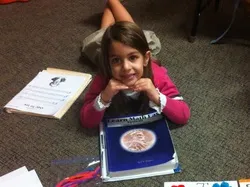
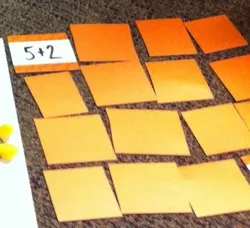
Memory Match
One such activity, 'Memory Match,' involves creating index cards with number facts related to the specific number family the students are studying (e.g., for the 7s family: 1+6, 2+5, 3+4, 4+3, 5+2, 6+1, etc.). Two sets of cards are made to match the facts. To play, the cards are placed face down, and students draw two cards at a time, aiming to match the facts. As they progress and learn more number families, answers to the facts can be added to the cards. For instance, if a student draws cards showing 1+6 and 7, they successfully make a match. This engaging activity encourages learning and reinforces mathematical concepts in an enjoyable manner for young learners.

Pipe Cleaner Numbers
This is my one of my favorites. Take ten or so pipe cleaners and cut them in half. Have your child shape them into numbers from one to whatever number family you are working on. Then have them shape one into a plus sign and a minus sign. Then put facts together.
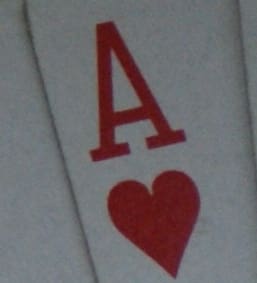
Use Playing Cards
This one was created by the author's son. The teacher creates five cards: one with a plus sign, one with a minus sign, greater than and less than signs, and an equal sign. Get a deck of playing cards and have the student draw two cards. The teacher decides which operation to place in the center - plus or minus, and the student does the math. Round two: the student draws two cards and decides which sign is best - less than, greater than, or equal.
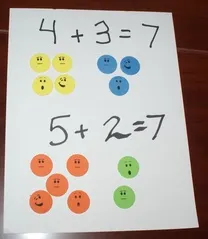
Fact Family Stickers
Write out on a piece of blank paper the fact family you are working on (Ex. 7’s family) 1+6 2+5 3+4 4+3 5+2 6+1 7+0. Below each fact have the child place different colored stickers (1 yellow smile face + 6 blue smile faces). You can also use beans or Cheerios if you prefer.
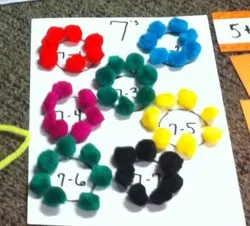
Subtraction Pom Poms
I drew seven circles on a piece of paper and wrote the fact family subtraction facts inside. We used double-sided tape on the outline of the circles just so pom poms wouldn’t slide around, but you don’t have to. I placed 7 of the same colored pom poms on each circle. My daughter then took the appropriate number of pom poms away per the written problem in the middle. For example if the middle said 7-4, she took four away and had three left on her circle.

Dice
This is simple, we rolled the dice and she gave me the number that she had to add to it to equal our fact family. For example, if she rolled a two she blurted out five etc. This worked with subtraction as well. If she rolled a four, she had to tell me 7-4=3.

Play catch-and-answer
Teacher asks, "4 + 3" and tosses the ball. Student catches the ball and then answers. Student tosses the ball back to the teacher or to another student and repeat.

Tally Marks
For this I filled a bag with assorted colored marbles (keeping with our example 7’s, I would put 7 marbles of each color in the bag) Have your child reach in and grab a handful out, put them aside (This is just so they do not always have the same number of tally marks). Now as they pull out a marble have them write a tally mark on a piece of paper under that corresponding color. Pull out another and put a tally mark under its corresponding color. Keep doing this until the bag is empty. Last, have them count the tally marks under each and write the corresponding number and add. You guessed it –it is their fact family again!
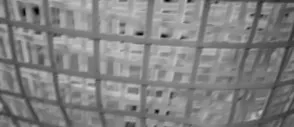
Play laundry ball
Student tosses a ball (or dirty clothes) into the laundry basket. Count how many times the student "makes a basket" in a row. Count the number of misses in a row and subtract from the number of baskets made.
Or two students take turns tossing the ball into the basket. Add the number of "baskets made" in a row. As soon as the basket is missed it is the second players turn. Each student adds their score. The first one to 25 baskets wins.
Fact Finger Paint
I know this sounds scary! Mess and all, but it is not bad I promise. Assign each number your working on a color. Again using the above example of 7’s family, I would assign 1-red 2-blue 3-orange 4-white 5-green 6-yellow 7-purple 0-black. We made flowers, if you have a boy, he might enjoy bugs or trains. Tell your child to make fact family flowers or train cars. For example, I drew circles and had my daughter dip her thumb into the red and put one thumbprint on the circle then she would dip her thumb in yellow and make six more thumbprints all the way around the circle. Voila! A beautiful thumbprint flower showing 1+6.



